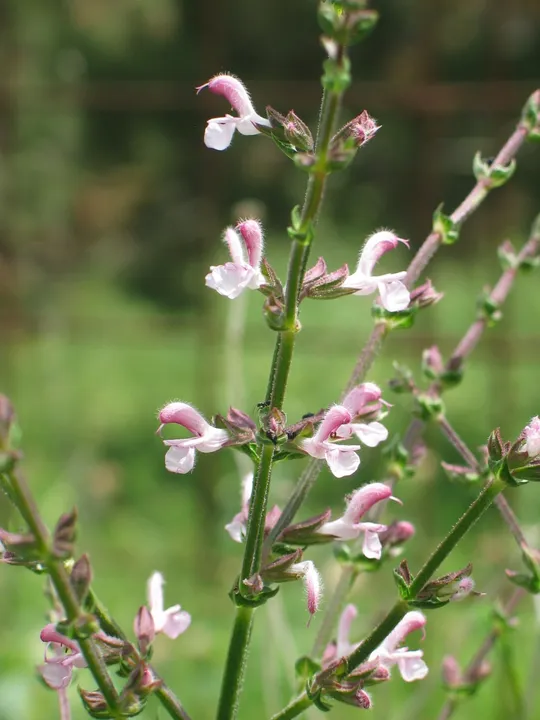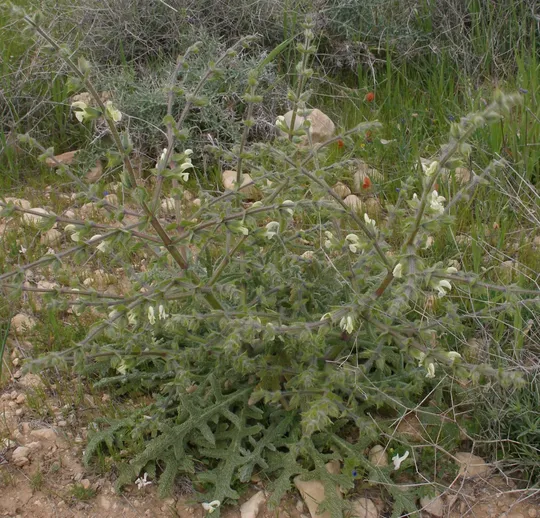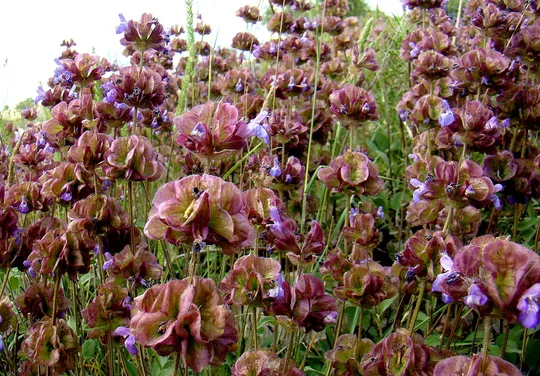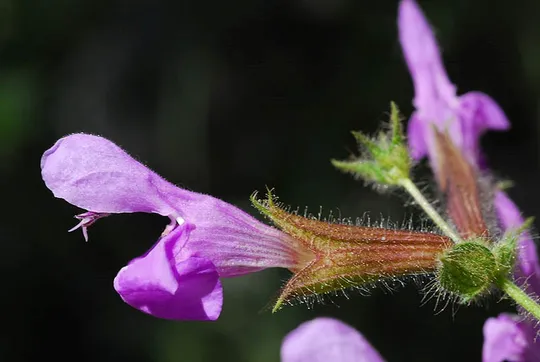Clary Sage, Cleareye
Salvia sclarea
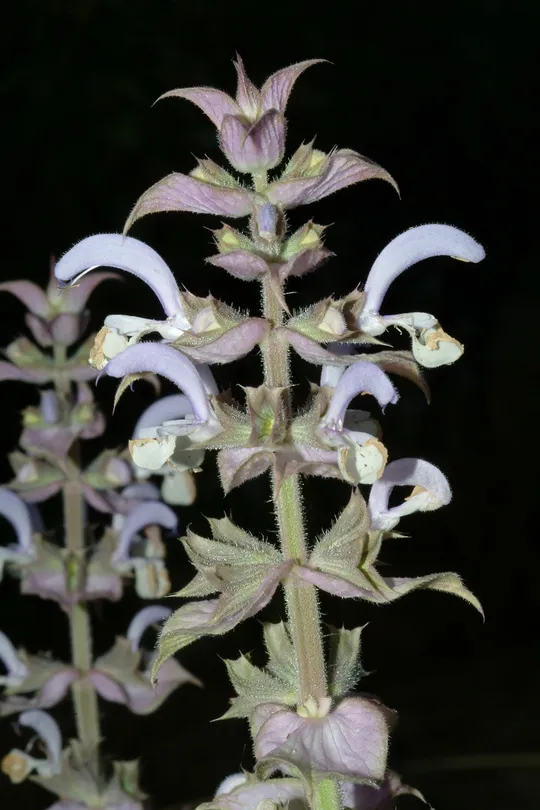
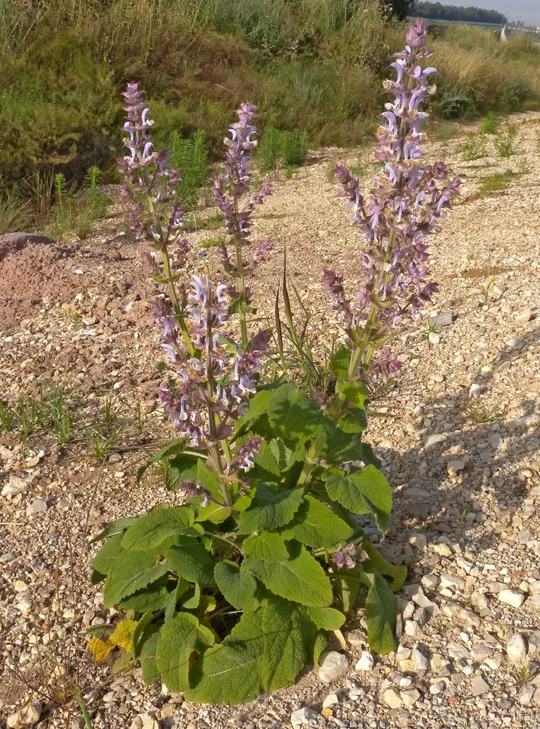
Salvia sclarea is a
spice plant that has medicinal uses. The essential oils extracted from the
plant are important in omega-3 oil and vitamin E production and other uses. Its
aromatic oil is often used as a supplement in fine soaps. It is also used as an
aromatic cooking herb named "clear-eye". S. sclarea has been
cultivated in Israel as an herb since 1980, as well as an ornamental plant with
impressive blooms.
Salvia sclarea grows in the
eastern Upper Galilee at two sites in a limited area of the Naftali Ridge: near
Malkiya and near Misgav Am at the head of Wadi HaShomer. S. sclarea is extinct from a
site near in Metula where it had been known since 1924 and from below
Margaliot. Since the 1980s there are observations of S. sclarea throughout Israel from Bet
Shemesh and the southern Hebron Mountains in the south to the Galilee in the
north. These are feral plants originated in agriculture and gardens.
Rocky sunny
slopes in the Mediterranean transition zone in the Naftali Ridge in the Upper Galilee.
The genus Salvia
is the largest in the Lamiaceae family and numbers approximately 900 herbaceous
annual species, shrubs and dwarf shrubs, whose distribution is cosmopolitan.
The greatest species richness is found in Eurasia (86 species in Turkey, of
which 50% are endemic to Turkey); other distribution centers of the genus are
found in South Africa and in Central and South America.
Important identification
characters for S. sclarea are the length
of its bracts (longer than the calyx) and the scale found at the opening of the
corolla tube. According to these identifying characters, it is possible to
define some of the S. palaestina populations, particularly
those found in the mountains of Southern Sinai, as S. sclarea. During flowering, some of the individuals
in these populations, have pink bracts that are slightly larger than the calyx.
In the Southern Sinai populations the scale in the corolla’s tube is found in
some individuals. In the Malkiya population, on the other hand, no such a scale
is found in the corolla tube. It seems that there is great variation in the identifying
signs mentioned above – the bract size relative to the calyx, their color and
the corolla’s tube scale – in S. palaestina and S. sclarea in Israel.
·
The number of sites where Salvia sclarea grows in the wild
is extremely small and has always been so, and now it has become extinct from
some of them.
·
The number of plants in the remaining
populations is small and they suffer from of the effects of grazing.
·
S. sclarea is not found within the boundaries of
a nature reserve, but there is a small population at the edge of the Misgav
Stream Reserve.
·
S. sclarea has a broad and global distribution
that is expanding as a result of cultivation and it is not globally endangered.
Specific
conservation sites should be established at growth sites and be protected from
grazing.
Salvia sclarea grows in all the
Mediterranean countries – from Portugal and eastwards, but its natural range is
apparently only in Italy and eastwards, including the Balkan countries and all
the rainy Middle Eastern highlands up to Central Asia. As a result of
cultivation its range has expanded and today it can be found in secondary
habitats in most European countries, North Africa and even in the United States. In the Levant, the species was recorded on relatively
many sites in Lebanon – both in the montane region and the coastal region south
to Tyre and Sidon. However, there is no data available from southern Syria,
from the Hermon and from the Valley of Lebanon. In Post's Flora, S. sclarea is recorded from the Beaufort
fortress and Marjayoun (Jadida) – sites very close to those known from northern
Israel. The Galilee is the southern limit of the species' range in the Middle
East, with the exception of the Southern Sinai population (see below).
Salvia
sclarea is a perennial
grass characteristic of rocky sunny habitats, which survives on two sites in
the Upper Galilee, which are the southern limit of the species range in the
Middle East. S. sclarea has a broad global distribution and is not globally
endangered.
Current Occupancy Map
| 1000 squre meter pixel | 5000 squre meter pixel | 10000 squre meter pixel | |
|---|---|---|---|
| number of observations | 0 | 0 | 0 |
| in total pixels | 0 | 0 | 0 |
| Family | Lamiaceae |
| Classification | On the endangered species list |
| Ecosystem | Mediterranean |
| Chorotype | Mediterranean – Irano Turanian + Holartic |
| Conservation Site | Malkiya |
| Rarity |
1
5
6
|
|---|---|
| Vulnerability |
0
0
4
|
| Attractiveness |
0
2
4
|
| Endemism |
0
0
4
|
| Red number |
1
4.2
10
|
| Peripherality | N |
| IUCN category | DD EW EX LC CR EN VU NT |
| Threat Definition according to the red book | Endangered |
 Based on:
Based on:
